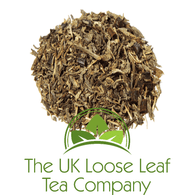Decaffeinated Tea
Decaffeinated tea is a great option for tea lovers who wish to avoid much of the caffeine naturally found in the tea leaf.
We can offer you decaffeinated tea in green, black, Darjeeling, plain or flavoured. All are of the highest quality and picked by us, especially for you.
Decaf Tea
All forms of tea (black, oolong, green, white, and pu-erh) can be decaffeinated; but really only black and green tea are regularly decaffeinated. It must be noted that decaffeinated tea is NOT caffeine free. The decaffeination process leaves a minute amount of caffeine in the leaf. By law, tea labelled as “decaffeinated” must have less than 2.5 percent of its original caffeine level. Currently, there are four methods of decaffeination: methylene chloride; ethyl acetate; carbon dioxide; and water processing.
Methylene chloride decaffeination is a process by which the molecules of caffeine bond to molecules of methylene chloride. Caffeine is removed either by 1) directly soaking the tea in methylene chloride or 2) indirectly soaking the water (used to remove the caffeine) in methylene chloride and then returning the water to the tea for re-absorption of flavours and oils. Because methylene chloride is widely believed to be unhealthy for consumption, a legal limit of 5 parts per million is placed on residual traces in the tea and the US bans all imports using methylene chloride.
Tea processed using ethyl acetate is often referred to as "naturally decaffeinated" because ethyl acetate is a chemical found naturally in tea. Caffeine is extracted in the same way as methylene chloride processing, but ethyl acetate is the solvent. However, ethyl acetate is very difficult to remove after the decaffeination process and is sometimes described as leaving a chemical taste.
Carbon dioxide (CO2) decaffeinated tea is essentially "pressure cooked" with this naturally occurring gas. At high pressures and high temperatures, carbon dioxide reaches a supercritical state. The CO2 becomes a solvent with its small, nonpolar molecules attracting the small caffeine molecules. Since flavour molecules are larger, they remain intact, which is why this process retains the flavour of the tea the best.
Caffeine extraction with water is used primarily for coffee decaffeination, however, a small number of tea products are decaffeinated using the water method. After the caffeine is removed from the tea by soaking the tea in hot water for a period of time, the solution is passed through a carbon filter for caffeine removal. The water is then returned to the tea for re-absorption of flavours and oils. This process is often described as “watering down” the flavour of the tea.
The UK Loose Leaf Tea Company offers decaffeinated teas that exclusively use the carbon dioxide (CO2) method. We feel that this is the safest form of decaffeination while retaining the greatest flavour and health benefits.

